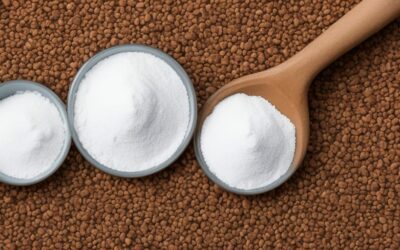Key Points:
- The AS diet was used to treat over 450 AS patients at the London Middlesex hospital
- 50% of these patients no longer required medication as a result of the diet
- Most rheumatologists have never heard of this diet (don’t let that put you off!)
If you’ve found your way to this website you’ve probably heard that it may be possible to use diet to manage your ankylosing spondylitis symptoms.
That’s great news and I’m glad you’re here.
But there’s a LOT of information to take in and you will no doubt be buzzing with questions.
Does it really work?
Which diet(s) are most effective?
Which foods can I eat?
How do I start?
I try to cover all of these questions on this website. When you have time you take a moment to explore and to find out more.
The aim of this article is to get you up to speed on the basics so that you can get access to the best information and make informed choices.
When it comes to diet and ankylosing spondylitis the reality is this.
Most rheumatologists are extremely sceptical.
I’m yet to encounter one who has even heard of Professor Alan Ebringer’s Low Starch Diet (London AS Diet) treatment.
This is the diet which was used very successfully for several years at the Middlesex hospital to treat patients with ankylosing spondylitis.
Those that have heard of any diet / symptoms connection tend to think the following…
That the evidence is either “non existent”, “spurious” or (if you’re really lucky) “inconclusive”.
People who use diet to manage their ankylosing spondylitis and now live 90% – 95% pain-free don’t feel the evidence is inconclusive
Some claim that it’s just a placebo effect or that any inflammation or pain relief is down to exercise rather than diet.
One problem is that there haven’t been any double blind studies on the Low Starch Diet.
That’s because running one on this – or any diet for that matter – is physically impossible.
Peer reviewed, double blind studies are the gold standard in science. They help mitigate the placebo effect and ensure there’s no foul play.
When you run a trial that involves administering a pill it’s easy.
Patients (and their researchers) don’t know whether they are receiving the new treatment or a placebo. That’s because you can make them look and taste exactly the same.
You can’t do the same with a potato or a banana. They have a very specific look, smell and taste that gives the game away.
This is one of the real difficulties when comes to running scientific studies for diet for ankylosing spondylitis, or indeed any condition.
And unfortunately it means you may often come up against a brick wall of resistance or disbelief and when you try to explain to your rheumatologist.
Please don’t let that put you off.
Virtually everyone who has had success with this diet will have been told that “diets are nonsense” and received countless eyeball rolls.
There is compelling evidence that elements of this diet (specifically removing starch and dairy) can be extremely effective for some.
This is especially the case when the diet is tweaked further to suit your unique genetic make-up and microbiome.
The first study into the low starch diet and the treatment of over 450 patients at the London Middlesex hospital
In an early study of 36 ankylosing spondylitis patients were put on the low starch diet and monitored carefully over a period of 9 months.
As the author, Professor Ebringer, notes:
“The majority of these AS patients reported that the severity of their symptoms declined and in some cases completely disappeared.
Many patients noticed that their requirement of NSAID’s [drugs like Ibuprofen] also decreased”.
36 people might seem like a small number and it is…
However following on from these findings over 450 ankylosing spondylitis patients were treated at the Middlesex Hospital in London using this diet.
The results were astonishing…
“Over half of these patients do not require any medication and are treated by diet alone.”
It goes on to say:
“The remaining patients, may require low doses of NSAID’s and those with an ESR elevation above 20 mrn/hr are treated with sulphasalazine-EN (Salazopyrin), in the dose range from 0.5 G to 3.0 G daily.”
Bear in mind that this is a very tricky (at first) diet to follow.
Many patients would have made mistakes, had lapses in willpower or simply not have been able to follow a strict regime.
(Anecdotally I read that one patient on the diet admitted that he had a potato with his evening meal each night).
Bearing in mind scientists can’t burst into people’s homes every day to ensure they are following the protocol correctly these findings are very promising.
The fact 50% of his patients no longer required medication as a result of the diet is incredible.
No need for anti-inflammatory drugs or immunosuppressants which can come with their own side effects and basket of problems.
Add to this today thousands of others are following a similar diet to this day and report living pain free is yet more compelling evidence for the impact of diet on autoimmune diseases like ankylosing spondylitis.
We should always strive for more evidence and controlled studies. Thankfully one is taking place right now at the University of Porto in Portugal and involves 150 AS patients.
The exciting thing about using diet to treat ankylosing spondylitis is that as long as you do it with the consent of your GP or rheumatologist it is something that can be tried safely.
You can keep taking medications as you try it and if you keep a regular diary of what you eat and how you feel as a result there’s nothing to lose by giving it a go.



0 Comments